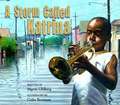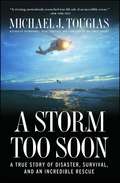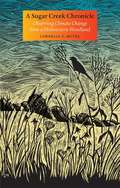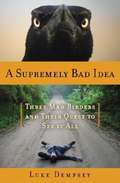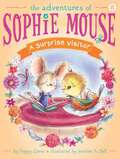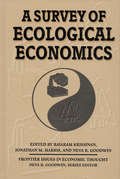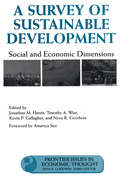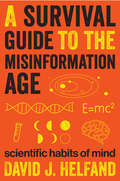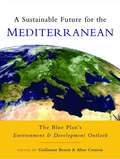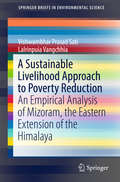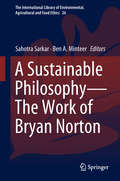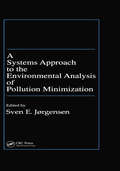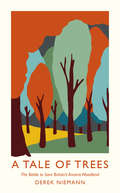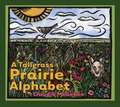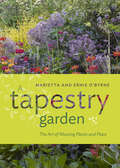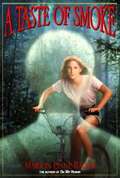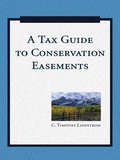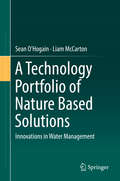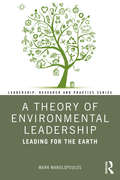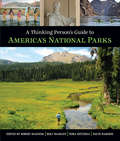- Table View
- List View
A Stone Sat Still
by Brendan WenzelIn this moving companion to the Caldecott Honor–winning They All Saw a Cat, Brendan Wenzel tells the story of a seemingly ordinary stone. But it isn't just a stone—to the animals that use it, it's a resting place, a kitchen, a safe haven...even an entire world. With stunning illustrations in cut paper, pencil, collage, and paint, and soothing rhythms that invite reading aloud, A Stone Sat Still is a gorgeous exploration of perspective, perception, sensory experience, color, size, function, and time, with an underlying environmental message that is timely and poignant. Once again Wenzel shows himself to be a master of the picture book form.
A Storm Called Katrina
by Myron UhlbergWhen Hurricane Katrina hits, Louis' dad leads the family into an unfamiliar, watery world of floating debris, lurking critters, and desperate neighbors. When Daddy fails to return from a scouting mission within the SuperDome, Louis knows he is no longer a baby. It's up to him to find Daddy--with the help of his prized cornet. Picture descriptions added.
A Storm Too Soon
by Michael J. TougiasFROM MASTERFUL STORYTELLER MICHAEL J. TOUGIAS COMES A NEW, HEART-STOPPING TRUE-LIFE TALE OF MARITIME DISASTER, SURVIVAL, AND DARING RESCUE, HIS MOST THRILLING AND AMAZING STORY YET. Seventy-foot waves batter a torn life raft 250 miles out to sea in one of the world's most dangerous places, the Gulf Stream. Hanging on to the raft are three men, a Canadian, a Brit, and their captain, JP de Lutz, a dual citizen of America and France. Their capsized forty-seven-foot sailboat has filled with water and disappeared below the tempestuous sea. The giant waves repeatedly toss the men out of their tiny vessel, and JP, with nine broken ribs, is hypothermic and on the verge of death. The captain, however, is a remarkably tough character, having survived a brutal boyhood, and now he must rely on the same inner strength to outlast the storm. Trying to reach these survivors before it's too late are four brave Coast Guardsmen battling hurricane- force winds in their Jayhawk helicopter. They know the waves will be extreme, but when they arrive they are astounded to find that the monstrous seas have waves reaching eighty feet. Lowering the wind-whipped helicopter to drop a rescue swimmer into such chaos will be extremely dangerous. The pilots wonder if they have a realistic chance of saving the sailors clinging to the broken life raft, and if they will be able to even retrieve their own rescue swimmer from the towering seas. Once they commit to the rescue, they find themselves in almost as much trouble as the survivors, facing one life-and-death moment after the next. Also caught in the storm are three other boats, each one in a Mayday situation. Of the ten people on these boats, only six will ever see land again. Spellbinding, harrowing, and meticulously researched, A Storm Too Soon is a vivid account about the powerful collision between the forces of nature and the human will to survive. Author Michael J. Tougias, known for his fast-paced writing style and character-driven stories, tells this true saga in the present tense to give the reader a thrilling, edge-of-your-seat immediacy. A Storm Too Soon is Tougias at his masterful best and a heart-pounding narrative of survival, the power of the human spirit, and one of the most incredible rescues ever attempted.
A Storm Too Soon: A True Story of Disaster, Survival and an Incredib
by Michael J. TougiasFROM MASTERFUL STORYTELLER MICHAEL J. TOUGIAS COMES A NEW, HEART-STOPPING TRUE-LIFE TALE OF MARITIME DISASTER, SURVIVAL, AND DARING RESCUE, HIS MOST THRILLING AND AMAZING STORY YET. Seventy-foot waves batter a torn life raft 250 miles out to sea in one of the world's most dangerous places, the Gulf Stream. Hanging on to the raft are three men, a Canadian, a Brit, and their captain, JP de Lutz, a dual citizen of America and France. Their capsized forty-seven-foot sailboat has filled with water and disappeared below the tempestuous sea. The giant waves repeatedly toss the men out of their tiny vessel, and JP, with nine broken ribs, is hypothermic and on the verge of death. The captain, however, is a remarkably tough character, having survived a brutal boyhood, and now he must rely on the same inner strength to outlast the storm. Trying to reach these survivors before it's too late are four brave Coast Guardsmen battling hurricane- force winds in their Jayhawk helicopter. They know the waves will be extreme, but when they arrive they are astounded to find that the monstrous seas have waves reaching eighty feet. Lowering the wind-whipped helicopter to drop a rescue swimmer into such chaos will be extremely dangerous. The pilots wonder if they have a realistic chance of saving the sailors clinging to the broken life raft, and if they will be able to even retrieve their own rescue swimmer from the towering seas. Once they commit to the rescue, they find themselves in almost as much trouble as the survivors, facing one life-and-death moment after the next. Also caught in the storm are three other boats, each one in a Mayday situation. Of the ten people on these boats, only six will ever see land again. Spellbinding, harrowing, and meticulously researched, A Storm Too Soon is a vivid account about the powerful collision between the forces of nature and the human will to survive. Author Michael J. Tougias, known for his fast-paced writing style and character-driven stories, tells this true saga in the present tense to give the reader a thrilling, edge-of-your-seat immediacy. A Storm Too Soon is Tougias at his masterful best and a heart-pounding narrative of survival, the power of the human spirit, and one of the most incredible rescues ever attempted.
A Student'S Guide to the Seashore
by J. D. Fish S. FishStudents and naturalists are not only interested in which species live on the seashore but also about their biology. A Student's Guide to the Seashore is a unique, concise, illustrated guide to both the biology and the identification of over 600 common and widespread shore animals and plants. This new edition, for the first time, includes simple keys to allow accurate identification, and the author's line drawings beautifully illustrate each species. Together with concise summaries of diagnostic features, and notes on biology, this is the first comprehensive guide to the seashore giving a fascinating insight into the diversity and complexity of life on the shore.
A Study of India's Textile Exports and Environmental Regulations
by K.S. Kavi KumarThis book examines the interplay between trade and the environment, with a focus on the Indian textile sector. While it is often claimed that developed countries' non-tariff trade measures adversely affect the trade prospects of developing countries, establishing that claim systematically is a challenging task. This book examines the dilemma on the basis of various approaches, including a primary survey of different stakeholders and the large-scale modelling of the economy-environment inter-linkages. The interplay between the costs involved in meeting environmental regulations and the potential price-premiums that the cleaner products would get in the international market is analysed in order to assess the future trade prospects for Indian textiles. In addition, the book provides a comprehensive overview of the present scenario of the Indian textile sector. Accordingly, it will be of great interest to researchers, policy makers and graduate students specializing in environmental economics, development economics and international economics.
A Sugar Creek Chronicle: Observing Climate Change from a Midwestern Woodland
by Cornelia F. MutelIn 2010, while editing a report on the effects of climate change in Iowa, ecologist Cornelia Mutel came to grips with the magnitude and urgency of the problem. She already knew the basics: greenhouse gas emissions and global average temperatures are rising on a trajectory that could, within decades, propel us beyond far-reaching, irreversible atmospheric changes; the results could devastate the environment that enables humans to thrive. The more details she learned, the more she felt compelled to address this emerging crisis. The result is this book, an artful weaving together of the science behind rising temperatures, tumultuous weather events, and a lifetime devoted to the natural world. Climate change isn't just about melting Arctic ice and starving polar bears. It's weakening the web of life in our own backyards. Moving between two timelines, Mutel pairs chapters about a single year in her Iowa woodland with chapters about her life as a fledgling and then professional student of nature. Stories of her childhood ramblings in Wisconsin and the solace she found in the Colorado mountains during early adulthood are merged with accounts of global environmental dilemmas that have redefined nature during her lifespan. Interwoven chapters bring us into her woodland home to watch nature's cycles of life during a single year, 2012, when weather records were broken time and time again. Throughout, in a straightforward manner for a concerned general audience, Mutel integrates information about the science of climate change and its dramatic alteration of the planet in ways that clarify its broad reach, profound impact, and seemingly relentless pace. It is not too late, she informs us: we can still prevent the most catastrophic changes. We can preserve a world full of biodiversity, one that supports human lives as well as those of our myriad companions on this planet. In the end, Mutel offers advice about steps we can all take to curb our own carbon emissions and strategies we can suggest to our policy-makers.
A Supremely Bad Idea: Three Mad Birders and Their Quest to See It All
by Luke DempseyIt was an epiphany: The moment two friends showed Luke Dempsey a small bird flitting around the bushes of his country garden, he fell madly in love. But did he really want to be a birder? Didn't that mean he'd be forced to eat granola? And wear a man-pouch? Before he knew it, though, he was lost to birding mania. Early mornings in Central Park gave way to weekend mornings wandering around Pennsylvania, which morphed into week-long trips to Texas, Arizona, Michigan, Florida--anywhere the birds were. A Supremely Bad Idea is one man's account of an epic journey around America, all in search of the rarest and most beautiful birds the country has to offer. But the birds are only part of it. There are also his crazy companions, Don and Donna Graffiti, who obsess over Dempsey's culinary limitations and watch in horror as an innocent comment in a store in Arizona almost turns into an international incident; as a trip through wild Florida turns into a series of (sometimes poetic) fisticuffs; and as he teeters at the summit of the Rocky Mountains, a displaced Brit falling in love all over again, this time with his adopted country. Both a paean to avian beauty and a memoir of the back roads of America, A Supremely Bad Idea is a supremely fun comic romp: an environmentally sound This Is Spinal Tap with binoculars.
A Surprise Visitor (The Adventures of Sophie Mouse #8)
by Poppy GreenA little bird who’s learning to fly accidentally winds up in Sophie’s yard in the eighth charming book of The Adventures of Sophie Mouse!Sophie gets a surprise visitor when a little bird makes a crash landing into her yard and hurts his wing. But with Sophie and her friends to help nurse him back to health, the baby bird will be flying high in no time! With easy-to-read language and illustrations on almost every page, the Adventures of Sophie Mouse chapter books are perfect for beginning readers.
A Survey of Ecological Economics (Frontier Issues in Economic Thought #1)
by Jonathan Harris Neva R. Goodwin Rajaram KrishnanThe emergent discipline of ecological economics is based on the idea that the world's economies are a function of the earth's ecosystems -- an idea that radically reverses the world view of neoclassical economics. A Survey of Ecological Economics provides the first overview of this new field, and a comprehensive and systematic survey of its critical literature.The editors of the volume summarize ninety-five seminal articles, selected through an exhaustive survey, that advance the field of ecological economics and represent the best thinking to date in the area. Each two- to three-page summary is far more comprehensive than a typical abstract, and presents both the topics covered in each paper and the most important arguments made about each topic. Sections cover: historical perspective definition, scope, and interdisciplinary issues theoretical frameworks and techniques energy and resource flow analysis accounting and evaluation North-South/international issues ethical/social/institutional issues Each section is preceded by an introductory essay that outlines the current state of knowledge in the field and proposes a research agenda for the future. A Survey of Ecological Economics is the first volume in the Frontier Issues in Economic Thought series produced by the Global Development And Environment Institute at Tufts University.
A Survey of Sustainable Development: Social And Economic Dimensions (Frontier Issues in Economic Thought #6)
by Amartya Sen Kevin Gallagher Jonathan Harris Neva R. Goodwin Timothy WisePerpetual economic growth is physically impossible on a planet with finite resources. Many concerned with humanity's future have focused on the concept of "sustainable development" as an alternative. Sustainable development brings together elements of economics, public policy, sociology, ecology, resource management, and other related areas, and while the term has become quite popular, it is rarely defined, and even less often is it understood. A Survey of Sustainable Development addresses that problem by bringing together in a single volume the most important works on sustainable human and economic development. It offers a broad overview of the subject, and gives the reader a quick and thorough guide to this highly diffuse topic. The volume offers ten sections on topics including: economic and social dimensions of sustainable development, the North/South balance, population and the demographic transition, agriculture and renewable resources, energy and materials use, globalization and corporate responsibility, and local and national strategies.Each section is introduced with an essay by one of the volume editors that provides an overview of the subject and a summary of the mainstream literature, followed by two- to three-page abstracts of the most important articles or book chapters on the topic.A Survey of Sustainable Development is the sixth and final volume in the Frontier Issues of Economic Thought series produced by the Global Development And Environment Institute at Tufts University. Each book brings together the most important articles and book chapters in a "frontier" area of economics where important new work is being done but has not yet been incorporated into the mainstream of economic study. The book is an essential reference for students and scholars concerned with economics, environmental studies, public policy and administration, international development, and a broad range of related fields.
A Survival Guide to the Misinformation Age: Scientific Habits of Mind
by David HelfandWe live in the Information Age, with billions of bytes of data just two swipes away. Yet how much of this is mis- or even disinformation? A lot of it is, and your search engine can't tell the difference. As a result, an avalanche of misinformation threatens to overwhelm the discourse we so desperately need to address complex social problems such as climate change, the food and water crises, biodiversity collapse, and emerging threats to public health. This book provides an inoculation against the misinformation epidemic by cultivating scientific habits of mind. Anyone can do it—indeed, everyone must do it if our species is to survive on this crowded and finite planet.This survival guide supplies an essential set of apps for the prefrontal cortex while making science both accessible and entertaining. It will dissolve your fear of numbers, demystify graphs, and elucidate the key concepts of probability, all while celebrating the precise use of language and logic. David Helfand, one of our nation's leading astronomers and science educators, has taught scientific habits of mind to generations in the classroom, where he continues to wage a provocative battle against sloppy thinking and the encroachment of misinformation.
A Sustainable Future for the Mediterranean: The Blue Plan's Environment and Development Outlook
by Lucien Chabason'Here's a work arriving just at the right moment and contributingnew insights at precisely the time when public opinion remains sceptical of the not very promising future we are preparing for our children, when governments balk at explaining to their electorates the vital but unpopular decisions that have to be taken and when civil society, with few ways and means, is finally becoming involved. This remarkable work will help all actors to understand the inter-linkages between economic activities and the environment in the Mediterranean Basin and take concerted, effective action to build a positive, sustainable future' Mohamed Ennabli, former Minister of the Environment and Land Use Panning, Tunisia 'The Blue Plan has carried out a remarkable assessment of the serious environmental probems and insufficiently targeted cooperation in the Mediterranean, and also of new financing systems to be implemented, which would increase the capacities of local authorities and economic and social partners' Georges Corm, former Minister of Finance, Lebanon The Mediterranean Basin and its surrounding countries is a microcosm of the environmental and sustainability challenges facing people across the world. Depending on the development path it takes in the future, the region can either become a positive model for the regional regulation of globalization, or, more onerously, it might reinforce global instability. This unique volume is the definitive, authoritative assessment of the environment and development of the Mediterranean Basin and its 22 countries and territories, spanning five decades from 30 years in the past to 20 years into the future. Produced by the Blue Plan within the framework of UNEP/Mediterranean Action Plan and backed by the EU and national governments, it brings together the work of more than 100 researchers from dozens of national, regional and local governments and research groups into the only comprehensive insight into sustainable development issues in the region. Core coverage includes water, energy, transport, cities, rural and coastal areas, as well as related issues such as climate change, population growth, geopolitical changes, unemployment and poverty, pollution, economic and environmental policies, regional cooperation and the Euro-Mediterranean Partnership. Information is clearly presented through hundreds of full-colour maps, graphs, tables and a wealth of case studies. This is a must-have reference for all levels of government, NGOs and libraries, as well as practitioners, academics and businesses involved in economics, natural resource management, land and maritime transport, water, energy, infrastructure, urban and rural development, agriculture, fishing and aquaculture, tourism and coastal management. Countries and territories covered: Spain, France, Italy, Monaco, Malta, Cyprus, Slovenia, Croatia, Bosnia-Herzegovina, Serbia and Montenegro, Albania, Greece, Turkey, Syria, Lebanon, Palestinian Territories, Israel, Egypt, Libya, Tunisia, Algeria and Morocco. Preface by Lucien Chabason, Chairman of the Blue Plan.
A Sustainable Livelihood Approach to Poverty Reduction: An Empirical Analysis of Mizoram, the Eastern Extension of the Himalaya (SpringerBriefs in Environmental Science)
by Vishwambhar Prasad Sati Lalrinpuia VangchhiaThis book presents a socio-economic and livelihood analysis of agriculturally-dependent communities of Mizoram, the eastern extension of the Himalaya, using the sustainable livelihood approach. Such an approach to poverty reduction is inevitable, particularly, in areas where livelihoods depend largely on biomass-based agriculture and livestock production. Mizoram possesses abundant natural resources - land, water and forest - but those resources are largely unused. The region suffers from chronic poverty and malnutrition, and climate change has further influenced livelihood patterns. This work studies all the aspects of natural potentials and livelihood status in Mizoram. It also discusses the major driving forces that influence livelihood patterns. Based on a detailed analysis of empirical data, several policy measures are suggested to cope with chronic poverty and malnutrition. The book is therefore highly useful for all stakeholders; students, researchers, academicians, policy makers and politicians involved in rural/community development.
A Sustainable Philosophy—The Work of Bryan Norton (The International Library of Environmental, Agricultural and Food Ethics #26)
by Ben A. Minteer Sahotra SarkarThis book provides a richly interdisciplinary assessment of the thought and work of Bryan Norton, one of most innovative and influential environmental philosophers of the past thirty years. In landmark works such as Toward Unity Among Environmentalists and Sustainability: A Philosophy of Adaptive Ecosystem Management, Norton charted a new and highly productive course for an applied environmental philosophy, one fully engaged with the natural and social sciences as well as the management professions. A Sustainable Philosophy gathers together a distinguished group of scholars and professionals from a wide array of fields (including environmental philosophy, natural resource management, environmental economics, law, and public policy) to engage Norton’s work and its legacy for our shared environmental future. A study in the power of intellectual legacy and the real-world influence of philosophy, the book will be of great interest scholars and students in environmental philosophy, public policy and management, and environmental and sustainability studies. By considering the value and impact of Norton’s body of work it will also chart a course for the next generation of pragmatic environmental philosophers and sustainability scholars grappling with questions of environmental value, knowledge, and practice in a rapidly changing world.
A Systems Approach to the Environmental Analysis of Pollution Minimization
by Sven E. JorgensenThe environmental analysis of pollution problems always involves the use of mass and energy balances to quantify the extent of pollution and its sources. This same form of analysis can be applied to ecosystems, production systems, a whole country or a region. A Systems Approach to the Environmental Analysis of Pollution Minimization identifies and describes the common factors shared by these systems.The book is organized in twelve chapters and progresses from general concepts to specific assessment methods. Chapter one is a general introduction to environmental management principles. Chapter two discusses conservation principles and their applications to environmental health. Chapters three and four explore ecosystem health, properties and analysis. Chapters five through eleven present different methods of analysis including Green Accounting, Clean Technology, Life Cycle Analysis, and Risk Assessment. Editor Sven Jorgensen closes the book with a sweeping summary. Jorgensen is a internationally published authority on the use and analysis of ecosystem models. His new book is a comprehensive guide for both students and professionals. A Systems Approach to the Environmental Analysis of Pollution Minimization is an invaluable contribution.Features
A Tale of Trees: How Britain Nearly Lost its Ancient Woodland
by Derek NiemannWe are a nation that loves its ancient woods and trees. But in the space of just 40 years, more than a third of our ancient woods were destroyed. How and why did this happen? A Tale of Trees is the untold story of how we nearly lost our greatest national treasure.
A Tale of Trees: How Britain Nearly Lost its Ancient Woodland
by Derek NiemannWe are a nation that loves its ancient woods and trees. But in the space of just 40 years, more than a third of our ancient woods were destroyed. How and why did this happen? A Tale of Trees is the untold story of how we nearly lost our greatest national treasure.
A Tallgrass Prairie Alphabet
by Claudia Mcgehee"Aromatic aster, butterfly weed, coyote, dickcissel..." Learn your ABCs with these animals and plants unique to the U.S. prairie.
A Tapestry Garden: The Art of Weaving Plants and Place
by Ernie O'Byrne Marietta O'Byrne Doreen Wynja“This is a love story about a couple and their relationship with an acre-and-a-half of land. . . with exceptional plant descriptions that read like character references for old friends. . . . beautiful photographs and prose await.” —Library Journal Marietta and Ernie O’Byrne’s garden—situated on one and a half acres in Eugene, Oregon—is filled with an incredible array of plants from around the world. By consciously leveraging the garden’s many microclimates, they have created a stunning patchwork of exuberant plants that is widely considered one of America’s most outstanding private gardens. In A Tapestry Garden, the O’Byrnes share their deep knowledge of plants and essential garden advice. Readers will discover the humble roots of the garden, explore the numerous habitats and the plants that make them shine, and find inspiration in photography that captures the garden’s astonishing beauty. There is something here for every type of gardener: a shade garden, perennial borders, a chaparral garden, a kitchen garden, and more. Profiles of the O’Byrne’s favorite plants—including hellebores, trilliums, arisaemas, and alpine plants—include comprehensive growing information and tips on pruning and care. A Tapestry Garden captures the spirit of a very special place.
A Taste of Smoke
by Marion Dane BauerThirteen-year-old Caitlin goes camping with her older sister in the woods of northern Minnesota, but she doesn't count on the intrusion of her sister's boyfriend or the ghost of a boy who died in the fire that destroyed the forest a century before.
A Tax Guide to Conservation Easements
by C. Timothy LindstromVoluntary land conservation, resulting from increasingly alluring tax benefits, has significantly changed the face of land use in the United States and promises to have an even more significant influence in the future. There are more than 1,500 land trusts in the U.S. today, involving millions of acres of land that have been permanently protected by conservation easements. Most of these land trusts depend heavily upon the significant tax benefits offered by the federal tax code as an incentive for voluntary land conservation. However, only a very small percentage of land trust personnel, landowners, or even government officials fully understand the complexity of the requirements for these tax benefits. This is a comprehensive book on the tax benefits of the charitable contribution, or bargain sale, of a conservation easement. It provides a detailed explanation of the complex and extensive requirements of the federal tax code and related concepts, including the rules governing the operation of tax-exempt organizations such as land trusts. Clearly written, systematic in its coverage, it is intended to be of value for anyone who deals with land trust issues as well as interested lay people. Structured for easy reference, A Tax Guide to Conservation Easements is designed to be used as a resource tool. Related topics are cross-referenced throughout. All principles in the book are illustrated with one or more useful examples. The tax benefits of contributing a conservation easement are unquestionably the heart of voluntary land conservation today. Knowledge of the tax law relating to land trusts and conservation easements is vital to properly establishing and managing land trusts and to insuring the tax deductibility of conservation easements. The future of voluntary land conservation is dependent on a clear understanding of tax policy. Complete, meticulous, and up to date, A Tax Guide to Conservation Easementsis an essential handbook.
A Technology Portfolio of Nature Based Solutions: Innovations In Water Management
by Sean O'Hogain Liam McCartonThis book aims to define the concept of Nature Based Solutions (NBS) by using case studies from members of the European Innovation Partnership (EIP) Water Action Group - NatureWat. NBS is defined and characterized in terms of water source, contaminants, removal mechanisms and resource recovery potential. The case studies presented illustrate the appropriateness of NBS promoting climate resilience. Readers will discover a technology portfolio based on a number of demonstration sites in the fields of climate change adaption, water and wastewater treatment, resource recovery and re-use, and restoring ecosystems to promote the use of nature based solutions. The chapters in the book present a multidisciplinary approach involving social scientists, governance representatives and engineers. The underlying philosophy of the book is the circular economy of water which prioritizes the concepts of resource recovery and resilience within water resource management. The first section of the book presents the background and objectives of the study, and how the action group aims to promote the use of nature based solutions through its diverse technology portfolio. Particular attention is given to the goals of finding cost-effective solutions for wastewater treatment, climate change mitigation, disaster risk reduction, flood protection, greening cities, degraded areas restoration and biodiversity preservation. The chapter on reclaimed water addresses water reuse and defines the term fit for purpose. Barriers and limitations related to NBS for water resource management are discussed. The book concludes with several case studies at local, regional and global levels which illustrate a new approach to water management. These case studies illustrate the application of a hybrid green and grey infrastructure system. This is a combination of traditional engineered infrastructure with nature based solutions which combines centralised and decentralised systems to optimise the reclamation of water for reuse in a fit for purpose model.
A Theory of Environmental Leadership: Leading for the Earth (Leadership: Research and Practice)
by Mark ManolopoulosIn A Theory of Environmental Leadership, Mark Manolopoulos draws on his original model of leading outlined in his cutting-edge book Following Reason to derive and develop the first properly systematic model of eco-leadership. Suppose humanity’s relation with the Earth may be described in terms of leadership "stages" or modalities: once upon a time, the Earth led or ruled humanity, and now we humans rule or lead the Earth. When the Earth led, the Earth flourished; now that humankind leads, the Earth flounders - ecological crises multiply and intensify. However, there might be a third stage or modality of leadership: humanity leading for the Earth, leading in a way that allows the world, including humans, to re-flourish. What would be the nature of this truly environmental form of leadership? A Theory of Environmental Leadership identifies and critically analyzes the two basic and incompatible positions associated with the way we construe and interact with the non-human: anthropocentrism (human supremacism) and ecocentrism (ecological egalitarianism). By rigorously analyzing and leveraging this polarity, this book outlines an innovative theory of eco-leadership together with some of its confronting-but-necessary measures. Expansive and incredibly timely, A Theory of Environmental Leadership is ideal for a range of audiences, from scholars and students of environmental leadership studies to activists and policymakers. The book’s remarkable clarity and engaging character also makes it suitable for the general public.
A Thinking Person's Guide to America's National Parks
by Robert Manning Rolf Diamant Nora Mitchell David HarmonThe book delves into issues affecting an array of parks: the iconic western national parks like Yellowsto≠ the urban parks such as Golden Gate National Recreation Area; historic sites including the Statue of Liberty National Monument and Gettysburg National Military Park; and cultural areas like Mesa Verde National Park that are among America's over 400 national parks. Twenty-three essays from contributing authors with deep personal and professional connections to the national parks serve as expert guides to places in the park system where: much of the nation's biological and cultural diversity is represented;ideas such as freedom, civil rights, and conservation were conceived;vast wilderness offers solitude and reflection;storied landscapes preserve a sense of place;the balance between recreation and preservation is tested;research and learning engage the next generation;the dynamics of nature are being shaped by a changing climate; and innovations in technology, sustainability, and stewardship provide a sense of purpose and hope.

